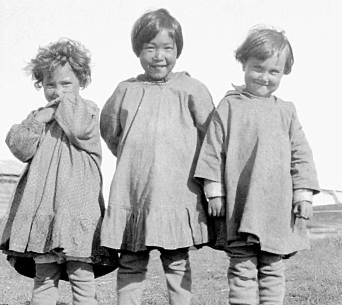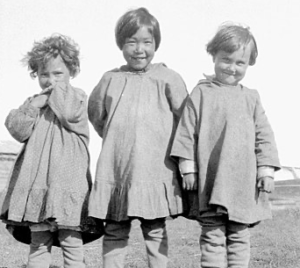*Trigger warning: These contents may be hard for some readers.*
Canadian Prime Minister Justin Trudeau is apologizing to Indigenous Canadians after the remains of more than 215 Indigenous children were found last week in a mass grave at a residential school, some of the children died as young as 3 years old. There were 150 residential schools in Canada.
This news was hard for many Native people in the U.S. and Canada to hear, but for a different reason than most. While the news shocked the world, our Native communities always knew what happened at residential schools because many have parents, grandparents or other generations who were forced to attend them. For some Native people in their thirties or forties, they’re the first generation that didn’t have to attend them.
For Native people, those who attended residential schools are called “residential school survivors.” Very telling isn’t it? For a long time Native families were forced to send their children to these schools which were often run by the Catholic Church, or risk going to jail or having their children taken into foster care. This happened widespread in both the U.S. and Canada.
The point of these schools was to erase Native identity. Children had their tongues mutilated for speaking their Native language. Some took fingers. Sexual abuse, rape, and torture was rampant. While many who attended them do not talk about it due to the trauma, some have spoke out:
Sphenia says: “I am now 73 years old. I was at Indian residential school from age 11-15. I had to work in the infirmary, where there were many sick and hungry children. I’d steal food like peanut butter and bread to feed them. A lot of kids died there. I had to handle the dead children — wrapping them to be buried. Once I got caught speaking my native language. I wasn’t aware my language was different. My punishment was having four fingernails pulled out. At residential school we all received numbers. I was known as #702.”
Eddy Charlie, a survivor of the Kuper Island Residential School says “Don’t try to see what can [you] do. We want people to hear this story for us. It’s not a fairy tale. It’s not something from one of the Stephen King novels. This truly, really happened to 150,000 children.”
A Truth and Reconciliation Commission was formed to investigate abuse at the schools in 2015 and found that at least 4,000 children were murdered or died in these institutions. They call it “cultural genocide.” The same should be done in the U.S. as here we had 332 residential schools, and many who attended these schools have similar stories to those who attended them in Canada.
These atrocities attempted to wipe out languages, culture and identity. When you tell someone to “get over it” or “move on” from trauma that has been sustained in their communities, oftentimes it’s because you have not done your research to understand how deep the trauma goes. You sit in privilege of never having to deal with that experience or having relatives who did either.
Native people have known a part of what went on at residential schools because many had family, friends, colleagues, community members or acquaintances who have shared their stories.
Eddy Charlie has great advice, research residential school stories, learn the history of what happened to Native communities in your state. Learning the truth is uncomfortable, but with knowledge comes empathy and understanding.
Ways to learn more:
- Search “residential school stories” on Twitter/Facebook/Instagram.
- Search “residentialschoolsurvivor” on TikTok.


There are no comments
Add yours